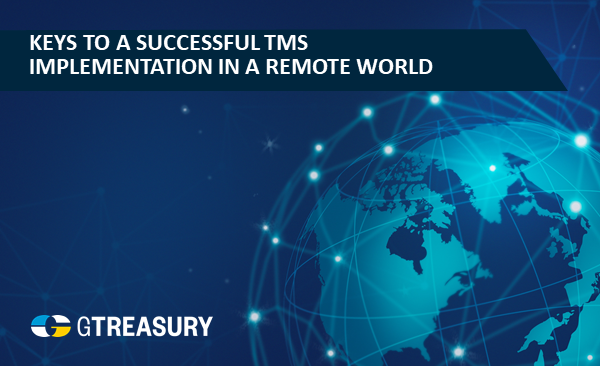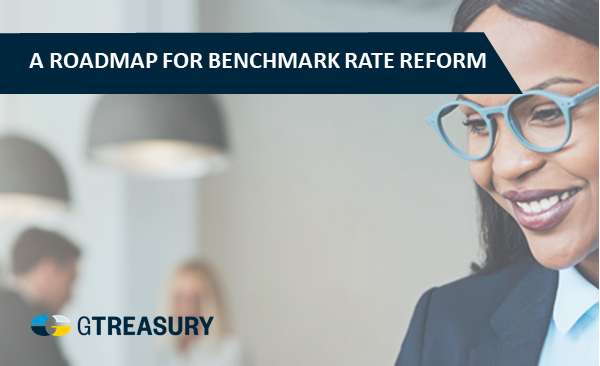
The state of the Alaska is the least populous within the US, but also one of the most cash-rich and prosperous states. With significant daily cash flow volumes handled by the treasury department thanks to its abundant resources, particularly oil, an update of the state’s cash management operation was due. This case study describes the project from selection through to implementation and the resulting benefits.
Hard working treasury professionals may possibly feel a touch of envy when contemplating the concept of cash and treasury management operations in Alaska. Certainly the 49th US state’s treasury department, based in the city of Juneau, enjoys one of the most beautiful business environments imaginable.
The department’s responsibilities include cash management operations on behalf of the largest state in the US, measured by area. Non-Alaskans are frequently amazed to see what happens when a scale map of Alaska is superimposed on the map of the continental US: our eastern tip bisects the coast around the Georgia-South Carolina border, and our western Aleutian Islands extremity bisects the California coast north of Los Angeles.
Alaska is a cash rich and prosperous state, which is, sadly, not typical for US state governments’ treasuries at present. The state’s general funds and other non-segregated investments presently amount to more than US$12bn, of which more than 50% is held in cash. The total assets held by the state amount to approximately US$ 49bn, with prosperity based on its abundant natural resources, primarily oil. The daily cash flow processed in the state’s treasury division has an approximate range of US$1bn to US$2bn.
Automating Cash Management: Genesis of the Project
For more than 10 years, the State of Alaska’s cash management operation was using an originally disk operating system (DOS)-based treasury workstation, which had been upgraded to a Windows version. The department decided that this system needed to be replaced when a review of its disaster recovery capabilities was conducted. In practice, it lacked portability – so if the department were ever confronted with a situation in which it had to relocate treasury operations to a back-up facility, there was not much confidence in the ability to restore and use its technology to reconstruct the cash position. Such a failure would mean the treasury team being unable to continue cash management operations in a sufficiently reliable way. This level of operational and financial risk was clearly unacceptable, given its potentially adverse impact on the state’s payroll administration, revenue, vendor payment and investment management processes.
The System Selection Project
Following the review, the treasury team initiated – and successfully completed – the necessary internal state processes to secure financing for a cash management technology replacement project. The next step was to construct a request for proposal (RFP), which was issued to potential suppliers in the cash management/treasury workstation system solution space. The team was seeking an active server pages (ASP) solution able to fulfil all its functional needs, and would additionally provide disaster recovery protection through being fully mobile, and therefore re-locatable as might be needed.
The department received an initial six responses from potential vendors; but as the selection project progressed, it became evident that some vendors were not able, or were unwilling, to work within the quite rigorous demands of the state’s procurement process. This process is highly structured and regulated, meaning that any deviations from standard practice from the department’s side would have to be properly authorized by the state’s attorney general. In practice, most of the initial responders just would not formally comply with the state’s procurement requirements. This lack of flexibility resulted in their withdrawal, or elimination, from the treasury workstation selection process. In effect, some potentially viable solutions were self-eliminated.
In the event, two strong contenders remained for the final stages of this procurement exercise. Ultimately, the state team selected GTreasury as its cash management treasury workstation vendor of choice. There were several primary reasons underlying the decision, which included the quality of GTreasury’s RFP response in comparison to their competitors, their strong customer service track record (revealed through client referencing), their flexible approach to the state’s rigorous procurement process, and their competitive pricing.
GTreasury brought all the necessary management and technical staff to ensure that a complete and effective solutions was delivered and implemented.
Michelle Prebula
The Implementation Project
Implementation was initially planned to last for a period of three months, but its eventual duration was nine months. I should stress that I do not regard this as being in any significant way problematic; my overall judgement of the GTreasury implementation is that it was smooth and, in comparison with many other projects of analogous complexity and importance, relatively quick.
I am very particular in insisting on the high quality, accuracy and efficiency of projects for which I am responsible and can report that this implementation phase both progressed and concluded very well against these exacting standards. The key to the sources of this good performance lies in understanding the detailed issues that arose during implementation – and the ways in which they were effectively managed and resolved, through strong and effective teamwork between the state’s treasury and the GTreasury professional personnel.
The most significant issue encountered during implementation related to the cash ledger functionality. The management of the cash ledger is an essential feature of the state treasury division’s daily cash management activities, and the initial system roll-out did not fulfil our requirements in this regard. The GTreasury implementation team rose to the challenge of bridging this gap by building an effective workaround solution, which treasury was able to test and approve. This work-around was accomplished using GTreasury’s report writing tool, Microsoft’s SQL server reporting services (SSRS), to build the necessary functions. The solution absolutely needed to correctly manage the opening and carried-forward balances required for the correct functioning of the state’s cash ledger.
I should emphasize that GTreasury brought in all the necessary management and technical staff to ensure that a complete and effective solution to this vital issue for the state’s cash management was delivered and implemented. The solution was built using the entry of starting balances, which GTreasury then automatically updated with the daily changes that reflect the actual debit and credit cash movements that passed through the system. In the course of a year’s cash flow business, large volumes of data naturally accumulate; this fills the database, and slowly degrades system performance. The issue was resolved by working with GTreasury to set up an annual process, in which a cash ledger cut-off exercise is performed about two months after the fiscal year-end. In this process, the database is stored, cleared and then re-loaded with the current opening balance data; the cash ledger management cycle is then re-started, and continues over the ensuing fiscal year.
An interesting issue that the team encountered during implementation was the management of certain data extract processes, in situations in which reference fields were found to be lacking in the course of the validation exercise, resulting from errors and omissions during the original data entry operations. GTreasury were able to build a report that fully managed this situation, enabling the treasury department to implement the necessary repairs in an effective manner.
The GTreasury solution which has been implemented additionally manages the most important control function of cash position reconciliation. This is a three-way reconciliation exercise, which is performed between the banks’ account balance and transaction reports, the GTreasury cash ledger, and the Alaska state accounting system. The State presently holds about 150 bank accounts with five different banks.
Project Benefits Realized
An important implementation benefit that the team realized from its investment in GTreasury is the standardization of its cash management processes and procedures, resulting in automation benefits and cash management control gains. In practice, this includes the automated assignment of the correct general ledger (GL) code to incoming cash transactions. The state’s cash management team has been pleased to find that there is a very high degree of flexibility, accuracy and efficiency in GTreasury’s solution to this mapping issue: today, about 98% of cash flows are successfully assigned to the correct GL account automatically. The residual 2% are non-conforming entries, or those that are treated separately by choice. These include all unexplained debits to the state’s bank accounts, which must, by policy, be individually researched and approved. Additionally, other transactions which need some manual processing to be performed include debits and credits which require splitting operations, and incomplete cash entries which require repair. These exceptional items are channeled through for human intervention and correction.
The State of Alaska Treasury division’s cash management operation’s typical US$1bn – US$2bn in daily cash volume range reflects the processing of some 400 to 500 cash movements per day. This substantial cash flow complex stems primarily from the state’s oil based revenues and royalties. The other major cash flow debits and credits relate to construction projects, other major purchases, the administration of the state payroll, and the investment, income and redemption management, plus the contribution and pension payment management of the US$22bn state pension fund.
It is important for me to stress how well I feel the GTreasury team performed under the rigorous regime of the state of Alaska’s official procurement process, and in their management of the stringent requirements of the Department of Revenue in implementing the solution.
Success Factors
In my judgement, it was absolutely critical to the project’s success that the state’s cash management team worked, in practice, closely and effectively with GTreasury’s professional services delivery team throughout the implementation exercise. GTreasury’s people really deserve very high marks for having provided sustained and excellent service quality. So often in this kind of technology implementation, the vendor’s team falls short in delivering effective and knowledgeable training and support to their company’s new client. In our case, this was definitely not so: right through the project, both teams contributed great value in the design and delivery of strong solutions for the problem issues which were encountered.
Today’s Situation
The outcome of the GTreasury project is that the state of Alaska’s cash management operation is now based on a much more robust technology infrastructure. The treasury department is very confident in the assured continuity of its treasury operations, which are now secured against the most feasible operational risks. The investment in the GTreasury workstation is a totally appropriate infrastructure investment, which is helping to secure a substantial financial operation, conducted on behalf of the State’s citizens and employees.
Potential Next Steps
The treasury workstation replacement project is now complete. The next stage in the evolution will occur with the implementation of a replacement accounting system, which will be the AMS Advantage enterprise resource planning (ERP) system. I anticipate that the process of building and implementing the interface with GTreasury will be relatively easy, although I will continue to insist on high standards for timely and accurate solution delivery a possible further future development is to implement an additional GTreasury module for bank performance analysis. The team has evaluated using such solutions periodically over the last 10 years and it remains to be seen whether an analysis of GTreasury’s offering indicates that there will be sufficient realizable cost/benefits to justify this further investment.
Related Resources

Podcast
Treasurers Share What's Working Now (and what...

Webinar
Keys to a Successful TMS Implemetation in a R...

Webinar
A Roadmap for Benchmark Rate Reform
Ready to see GTreasury in action?
See for yourself why hundreds of organizations use GTreasury to empower operational efficiency, insightful analysis and strategic decision-making.